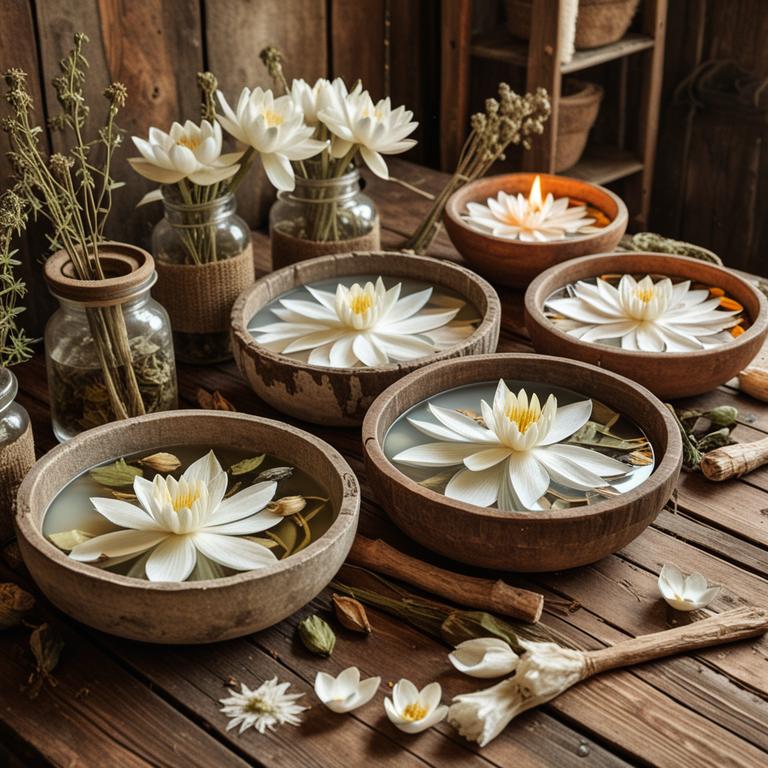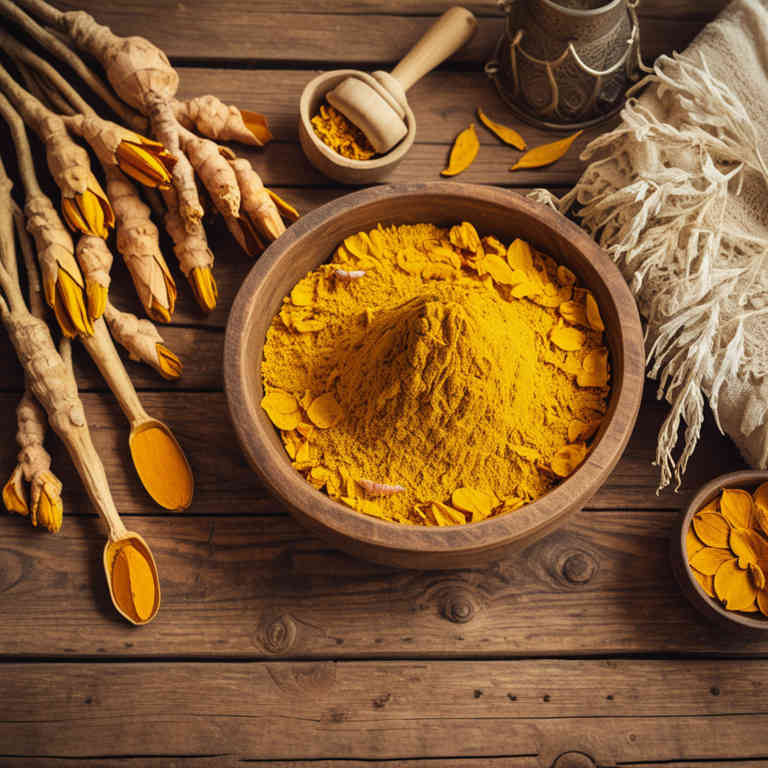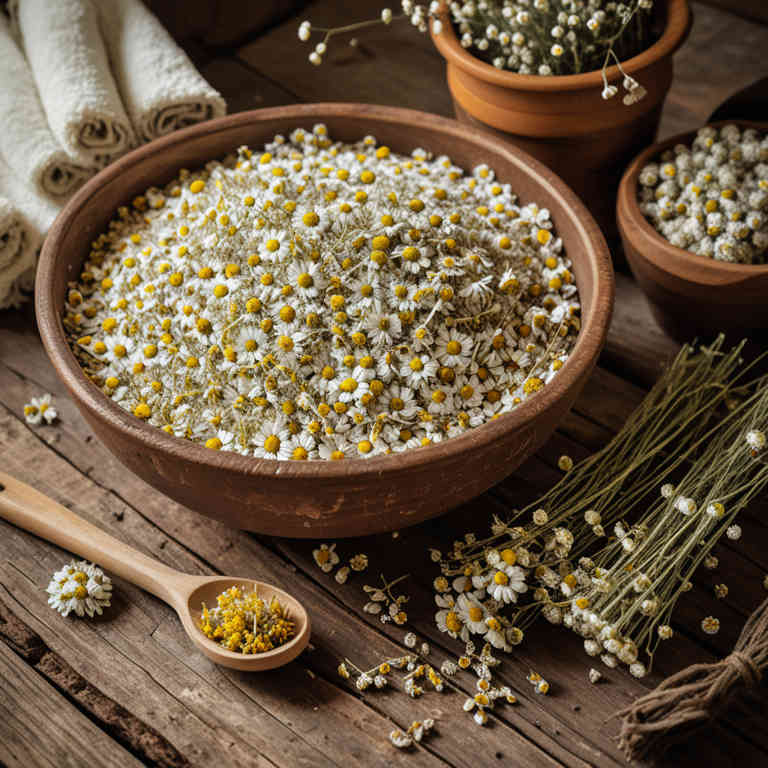10 Best Herbal Baths For Endometriosis

Herbal baths can be a soothing and supportive complementary therapy for women with endometriosis, offering potential relief from pain and inflammation.
Certain herbs, such as chamomile, lavender, and eucalyptus, are known for their anti-inflammatory and calming properties, which may help ease pelvic discomfort. When used in warm water, these herbs can promote relaxation and improve circulation, which may aid in reducing the severity of endometriosis-related symptoms. It is important to consult with a healthcare provider before incorporating herbal baths into a treatment plan to ensure safety and effectiveness.
While herbal baths are not a cure, they can be a valuable addition to a holistic approach to managing endometriosis.
FREE Herb Drying Checklist
How to make sure every batch retains maximum flavor, color, and aroma without the risk of mold or over-drying. Eliminate guesswork and trial-and-error, making herb drying faster, easier, and more efficient every time.
Table of Contents
1. Salvia officinalis

Salvia officinalis, commonly known as sage, has been traditionally used in herbal baths for its potential therapeutic properties, including anti-inflammatory and antiseptic effects.
When infused into bath water, sage can help soothe the pelvic area, potentially alleviating some of the discomfort associated with endometriosis. The essential oils and compounds in sage may support hormonal balance and reduce oxidative stress, which are often linked to endometriosis progression. However, it is important to consult with a healthcare provider before using sage baths, especially for individuals with sensitive skin or existing medical conditions.
While herbal baths may offer complementary relief, they should not replace conventional medical treatments for endometriosis.
2. Urtica dioica

Urtica dioica, commonly known as stinging nettle, has been traditionally used in herbal baths for its potential therapeutic benefits, including anti-inflammatory and detoxifying properties.
When used in a bath, the leaves of Urtica dioica can help soothe the skin and may provide relief from the discomfort associated with endometriosis, such as pelvic pain and inflammation. The herb is believed to support the body's natural detoxification processes, which may be beneficial for individuals dealing with the systemic effects of endometriosis. However, it is important to consult with a healthcare provider before using stinging nettle baths, as they may interact with certain medications or conditions.
While some individuals report positive effects, more research is needed to fully understand the efficacy and safety of Urtica dioica in managing endometriosis symptoms.
3. Hypericum perforatum

Hypericum perforatum, commonly known as St. John's Wort, has been traditionally used in herbal baths for its potential anti-inflammatory and analgesic properties, which may offer relief for women suffering from endometriosis.
When infused into bath water, the essential oils and active compounds of Hypericum perforatum may help reduce pelvic inflammation and ease menstrual pain associated with the condition. However, it is important to note that while some anecdotal evidence suggests benefits, scientific research on its efficacy for endometriosis is limited. Individuals should consult with a healthcare provider before using St. John's Wort baths, as it can interact with certain medications.
Despite its traditional use, hypericum perforatum baths should not be considered a substitute for conventional medical treatments for endometriosis.
4. Lavandula angustifolia

Lavandula angustifolia, commonly known as English lavender, has been traditionally used in herbal baths for its soothing and anti-inflammatory properties, which may offer relief for individuals with endometriosis.
The essential oils and phytochemicals in lavender possess mild analgesic and antispasmodic effects, potentially helping to reduce pelvic pain and discomfort associated with the condition. Incorporating lavender into a warm bath can promote relaxation and ease muscle tension, supporting overall well-being during flare-ups. However, it is important to consult with a healthcare provider before using lavender baths, especially if there are underlying skin sensitivities or other medical conditions.
While not a cure, lavender baths may serve as a complementary therapy to manage symptoms and enhance quality of life for those living with endometriosis.
5. Equisetum arvense

Equisetum arvense, commonly known as horse tail, has been traditionally used in herbal baths for its potential therapeutic properties.
These baths are believed to help alleviate symptoms associated with endometriosis, such as pelvic pain and inflammation, by promoting detoxification and improving circulation. The plant contains silica and other minerals that may support tissue repair and reduce oxidative stress in the body. When prepared as a herbal infusion, Equisetum arvense can be used in warm water baths to soothe the pelvic region and ease discomfort.
However, it is important to consult a healthcare provider before using it, as it may interact with certain medications or conditions.
6. Nymphaea alba

Nymphaea alba, commonly known as the white water lily, has been traditionally used in herbal baths to support women's health, including managing symptoms of endometriosis.
The plant contains compounds with anti-inflammatory and antioxidant properties that may help reduce pelvic inflammation and discomfort associated with the condition. Herbal baths infused with Nymphaea alba can promote relaxation and alleviate stress, which is often linked to the exacerbation of endometriosis symptoms. These baths are typically prepared by steeping the dried petals in hot water and using the infused liquid for soaking, allowing the beneficial compounds to be absorbed through the skin.
While not a cure, Nymphaea alba herbal baths may serve as a complementary therapy to support overall well-being and symptom management in individuals with endometriosis.
7. Achillea millefolium

Achillea millefolium, commonly known as yarrow, has been traditionally used in herbal baths for its anti-inflammatory and astringent properties, which may offer relief for individuals with endometriosis.
When infused into bath water, yarrow can help soothe pelvic discomfort and reduce menstrual cramps by promoting blood circulation and easing uterine tension. Its high concentration of essential oils and flavonoids may support hormonal balance and reduce oxidative stress, both of which are associated with endometriosis symptoms. While herbal baths should not replace medical treatment, they can be a complementary therapy to support overall comfort and well-being.
It is important to consult with a healthcare provider before incorporating yarrow baths into a treatment regimen, especially for those with sensitive skin or existing health conditions.
8. Rosmarinus officinalis

Rosmarinus officinalis, commonly known as rosemary, is a herbal remedy that has been traditionally used for its aromatic and therapeutic properties.
When incorporated into herbal baths for endometriosis, rosemary is believed to support hormonal balance and reduce inflammation, which are key factors in managing the condition. The essential oils from rosemary can be diluted in warm water to create a soothing bath that may help alleviate pain and promote relaxation. This natural approach is often favored by individuals seeking holistic treatments that complement conventional medical care.
While more research is needed, many women report feeling a sense of relief and improved well-being after using rosemary-infused baths as part of their self-care routine.
9. Curcuma longa

Curcuma longa, commonly known as turmeric, has been traditionally used in herbal baths for its anti-inflammatory and pain-relieving properties, which may offer relief for individuals suffering from endometriosis.
The active compound in turmeric, curcumin, is believed to reduce oxidative stress and inhibit inflammatory pathways that contribute to endometrial tissue growth and pain. When used in bath form, curcuma longa can be absorbed through the skin, providing a systemic anti-inflammatory effect without the gastrointestinal side effects associated with oral consumption. However, it is important to note that while some anecdotal evidence supports its use, more clinical research is needed to fully understand its efficacy and safety for endometriosis.
As with any complementary therapy, it should be used in conjunction with medical advice and not as a substitute for conventional treatments.
10. Matricaria chamomilla

Matricaria chamomilla, commonly known as chamomile, has been traditionally used in herbal baths for its soothing and anti-inflammatory properties, which may offer relief for women with endometriosis.
When infused into bath water, chamomile can help reduce pelvic discomfort and inflammation associated with the condition by promoting relaxation and improving blood circulation. The calming aroma of chamomile also has a positive effect on stress levels, which is often linked to exacerbating endometriosis symptoms. While herbal baths should not replace medical treatment, they can serve as a complementary therapy to support overall well-being.
It is important to consult with a healthcare provider before incorporating chamomile baths into a treatment plan, especially for those with sensitive skin or allergies.